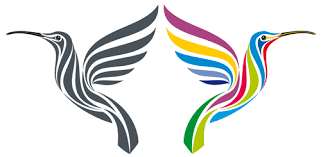What is Digital Art? an overview
- laurahelms
- Jan 4, 2017
- 3 min read
You may be wondering, what exactly is "digital art"?
Well, it is a long answer but I will try to break it into chunks...
Digital Art is any type of artwork that has been manipulated or created through digital means in some form of computer program. The industry standard software programs include the Adobe Creative Cloud (which includes programs like Photoshop, Illustrator, Lightroom and more), Poser, Autodesk, Sketchbook Pro, Maya, and Flash. Other programs commonly used could include Pixlr, Mudbox, Blender, Flipbook, Paint Tool Sai, FL Studio 11, zBrush, Cinema 4D Prime, Toon Boom Studio, 3ds Max, Gimp and more. These are just tools. You need to use the correct tool for the appropriate job.
Recommended Programs:
Adobe Creative Cloud Programs = $ student discount, includes Photoshop/Illustrator/others
Flash = awesome
Pixlr = free online, off-brand Photoshop ( https://pixlr.com/editor/ )
Types of digital art can include (but are not limited to):
-Animation
-Composite Art
-Digital Photography and Manipulation
-Vector Design
-Digital Painting
A breakdown of what each one looks like:
-Animation:
Yeah, the picture moves. Boom. Animation. This is a very complex and choreographed art form that requires a great deal of time and patience.
Program of Choice: Flash
-Composite Art
Also called digital collage. In this art form you take multiple images and arrange them into one continuous artwork. Using digital program, you can cut away backgrounds, stretch and transform images, you can adjust the color balance, add textures and move images anywhere you want.
Program of Choice: Adobe Photoshop
-Digital Photography and Manipulation
Taking photographs with a digital camera and then using computer programs to change, alter or enhance the images to create a pleasing image. Depending on how much you change and alter the image, this quickly leads back into Composite Art techniques.
Program of Choice: Adobe Lightroom (if you are just adjusting colors and contrast)
Program of Choice: Adobe Photoshop (if you plan to stretch, seriously alter or distort the image)
-Vector Design:
Math. Vector graphics are created from points, lines, shapes and curves that are based on mathematical formulas. These elements are filled with color, blends, tints or gradients, and lines have a stroke attribute such as a solid or dashed line with different thicknesses and colors. Why math? Well, the great thing about a vector design is that you can adjust the scale indefinitely and the computer does the calculations to adjust the image. It retains all the clean crisp lines and allows flexibility for the user. Vectors are great for t-shirt designs, logos, any sort of advertising and just to make awesome art. This is a quickly growing art form and one that most graphic designers use every single day. **And no, you do not have to be good at math to use this art form...
Program of Choice: Adobe Illustrator
-Digital Painting:
Exactly what it sounds like. Using a mouse or a fancy Wacom tablet, you use digitally simulated brushes to "paint" colors and textures onto a digital canvas. You can layer, erase, blend, mix, smudge and doodle your way to an amazing artwork. Digital paintings use pixels. Think of them as little cups that hold information. The more cups/pixels you have, the more information your artwork can hold and the more detail it can have. Most digital paintings are set to a resolution of around 300 ppi (pixels per inch). If you have a "low resolution" image, that means you do not have many pixels or very much information to use in the image = blurry or pixelate image. Digital paintings cannot be stretched or enlarged like vector designs. They hold only a finite amount of information and pixelate if enlarged past capacity.
Program of Choice: Adobe Photoshop
Vector vs. Raster (pixel) Art












































Comments